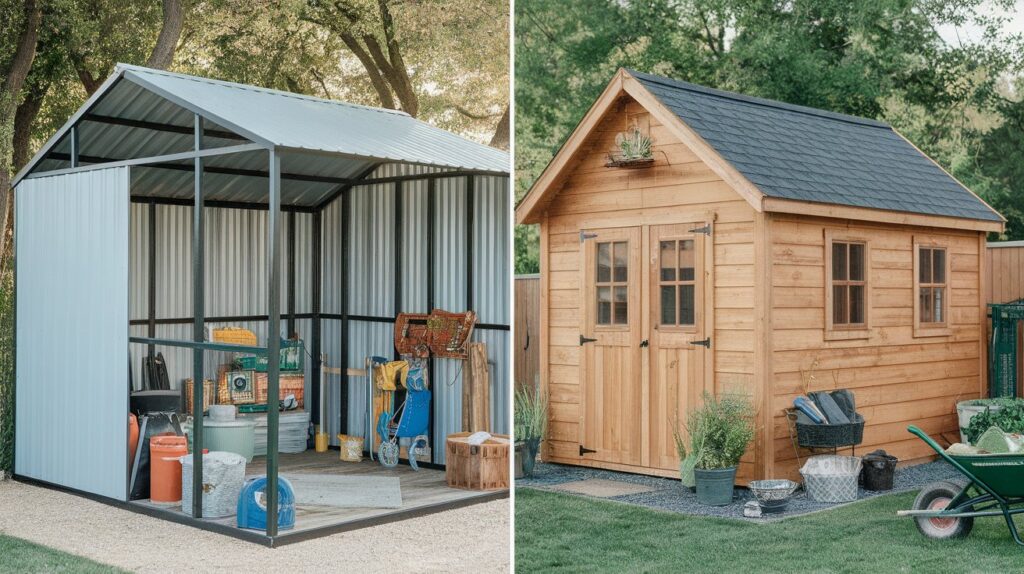Picture this: you’re standing in your backyard, dreaming of that perfect shed. Maybe it’s for storing garden tools, maybe it’s going to be your weekend workshop sanctuary. The big question hits you pretty quickly though. Do you grab a kit and get building, or go full custom?
Most people focus on the upfront price tag. That’s natural. But here’s where things get interesting. The real story happens over the years that follow.
Kit Sheds – The Fast Track Option
Shed kits are pretty straightforward. You order, it arrives, you build it. The appeal is obvious. Lower initial cost, faster setup, and honestly, less decision fatigue. No need to spend weeks picking every single component.
The thing is, kits come with trade-offs that show up later. The materials? They’re usually decent, but not always built for your specific climate or intended use. That matters more than you’d think. A kit designed for general use might struggle with your area’s humidity levels or wind patterns.
Then there’s the maintenance angle. Kit sheds often use standardized parts and finishes. When something needs fixing or replacing in five years, you’re hoping those exact components are still available. Sometimes they are, sometimes they’re not.
Going Custom – The Long Game
Custom builds cost more upfront. No sugar-coating that reality. But here’s what you’re actually buying with those extra dollars.
First, materials chosen specifically for your situation. If you live somewhere with intense summers, your builder can select roofing and wall materials that handle heat better. Coastal area? They’ll factor in salt air and humidity from day one.
The construction itself tends to be more solid. Custom builders usually work with higher-grade materials and better joining techniques. Your shed isn’t just assembled, it’s actually built to last.
But the real advantage shows up in year three, five, or ten. Custom sheds typically need less maintenance because everything was sized and selected properly from the start. When repairs are needed, standard building materials work fine. No hunting for proprietary parts.
Where The Numbers Really Tell The Story
Here’s where shed prices start making sense in the bigger picture. A decent kit might run you $3,000 to $5,000. Custom builds often start around $6,000 and go up from there.
But factor in maintenance costs over ten years. Kit sheds might need significant repairs or component replacements. Maybe the roof needs work because the original materials weren’t quite right for your climate. Or the door hardware fails and replacement parts are discontinued.
Custom sheds typically have lower ongoing costs. Better materials mean less frequent repairs. Standard construction methods mean easier fixes when they are needed.
The other factor people miss? Resale value. A well-built custom shed actually adds more to your property value than a basic kit build. That gap often covers much of the initial price difference.
Making The Choice That Works
So which way should you go? Honestly, it depends on your timeline and priorities.
Planning to stay in your home for many years? Custom probably makes financial sense. The higher upfront cost gets spread across years of better performance and lower maintenance.
Need something quickly, or not sure about long-term plans? A quality kit might be the smarter move. Just budget for potential repairs down the line.
The truth is, both options work. But understanding the real long-term costs helps you make the choice that actually fits your situation. Because nobody wants to be surprised by hidden expenses three years later.

